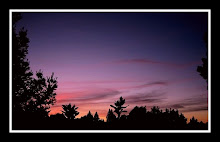 I was in San Franscisco in April 2007. It was my first time visiting. One of the places I visited was Haight & Ashbury. This is a place which was popularly known for its hippie movement in the 60s. The place still has its liberal presence from the outlook of the streets and stores like the cafes, clothing boutiques, booksellers, antiques and so on. The bohemian ambiance on these streets certainly made me seem like a kid in a candy store. I had my jaw-dropping experience when I walked into Amoeba Music. This is a large music store which sells music turn table records, audio cds and dvds of every genre on the planet from any era at good prices.
I was in San Franscisco in April 2007. It was my first time visiting. One of the places I visited was Haight & Ashbury. This is a place which was popularly known for its hippie movement in the 60s. The place still has its liberal presence from the outlook of the streets and stores like the cafes, clothing boutiques, booksellers, antiques and so on. The bohemian ambiance on these streets certainly made me seem like a kid in a candy store. I had my jaw-dropping experience when I walked into Amoeba Music. This is a large music store which sells music turn table records, audio cds and dvds of every genre on the planet from any era at good prices.I stopped by a dainty cafe afterwards on the same row as Amoeba Music for coffee. This is when I noticed the graffiti across the street in the image below. If I knew the graffiti artist, I would invite him/her to my house to paint my walls. If I had offended anyone by praising graffiti artwork, my profound apologies but beauty lies in the eye of the beholder. I liked what I saw.

(Unless otherwise indicated, all photographs on this blog are copyrighted by the photographer, whose permission is required for any usage)









